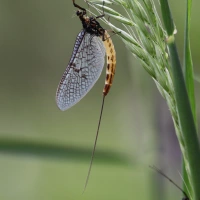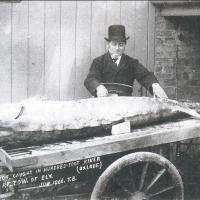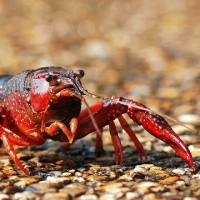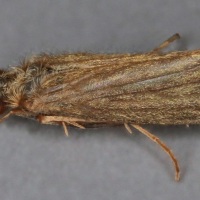The curious history of the mayfly
 Guest author: Craig Macadam, Riverflies partnership and Ephemeroptera Recording Scheme
Guest author: Craig Macadam, Riverflies partnership and Ephemeroptera Recording Scheme
—
The recording of mayfly species has had a long history. The first written record of a mayfly is in one of the oldest written texts – the Epic of Gilgamesh, which describes the life of Gilgamesh, a Babylonian ruler from around 2,700BC. The Epic was written in around 2,000BC on clay tablets, one of which describes the briefness of Gilgamesh’s life: ‘Ever the river has risen and brought us the flood, the mayfly floating on the water. On the face of the sun its countenance gazes, then all of a sudden nothing is there.’ The passage refers to the briefness of the adult mayfly’s life and how our own lives are just as brief. Whilst we don’t know what species this passage referred to it is remarkable that we have a mayfly record from over 4,000 years ago!
Today there are around 3,050 species known from throughout the world. In the UK we have 51 species, although two of these Heptagenia longicauda and Arthroplea congener are thought to no longer occur here. The Ephemeroptera Recording Scheme (www.ephemeroptera.org.uk) was established in 2000 to promote the study and recording of mayflies throughout the UK. To date, the scheme dataset has around 185,000 records, the majority of which are of larvae. The dataset is available on the NBN Gateway (www.searchnbn.net).
Depending where you live and fish, the term mayfly will represent different things. In the north of England and most of Scotland the term mayfly is generally used for all species in the order Ephemeroptera. However, in the south of England if you use the term ‘mayfly’ to refer to anything but Ephemera danica you will be hung, drawn and quartered and fed to the trout!
The use of ‘mayfly’ to refer to all members of the Ephemeroptera is a relatively recent development. The name is quite misleading because this group of insects can appear throughout the year. In fact, at one point they were called dayflies due to some of the species having an adult life of a single day. The common name comes from the habit of one species, Ephemera danica, which emerge as adults when the Mayflower or Hawthorn is in bloom.
In 1834, the entomologist John Curtis published a paper ‘Description of some nondescript British species of mayflies of anglers’. This paper described not only Ephemeroptera, but also some Plecoptera (stoneflies) and Trichoptera (caddisflies), suggesting that the term ‘mayfly’ was not restricted to only the Ephemeroptera and was perhaps more akin to our newly coined term ‘Riverflies’.
The Reverend A.E. Eaton, leading expert of the time on the Ephemeroptera, makes no mention of the term ‘mayfly’ in his ‘Monograph on the Ephemeridae’ published in 1870. However, in 1883 he published ‘A revisional monograph of recent Ephemeridae or Mayflies’. This monumental work which remains the ‘bible’ of Ephemeroptera workers, is the first entomological publication to specifically call the whole Ephemeroptera order ‘Mayflies’.














